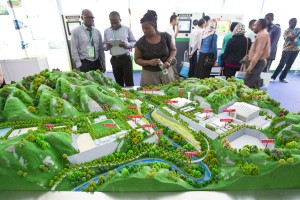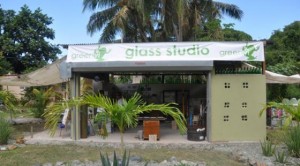Doubel Combustion Chamber
All Incinerators are Doubel Combustion Chamber with One Fuel Burner Each. After Burner Technology for Completely Combustion and Cleaner World.
Read MoreHigh Temperature Incineration
Temperature Range 800 Degree to 1200 Degree in Combustion Chamber. Temperature Thermocouple Monitor and Controller. High Quality Fire Brick and Refactory Cement.
Read MoreGet Lastest News
There are latest incinerator news like technical, public news, business tender for medical waste incinerator,animal incineration, pet cremation
Read MoreNanjing Clover Medical Technology Co.,Ltd.
Email: sales@clover-incinerator.com | Tel: +86-25-8461 0201
Regular model incinerator for market with burning rate from 10kgs to 500kgs per hour and we always proposal customer send us their require details, like waste material, local site fuel and power supply, incinerator operation time, etc, so we can proposal right model or custom made with different structure or dimensions.
Incinerator Model YD-100 is a middle scale incineration machine for many different usage: for a middle hospital sickbed below 500 units, for all small or big size family pets (like Alaskan Malamute Dog), for community Municipal Solid Waste Incineration, etc. The primary combustion chamber volume is 1200Liters (1.2m3) and use diesel oil or natural gas fuel burner original from Italy.
Latest Post
Laying Garbage to waste
The world’s largest incinerator will ensure that Beijing’s household garbage is not only disposed of in an eco-friendly manner, but also produces electricity for the energy-hungry city.
The world’s largest waste incinerator will start running at full speed next month after one year’s trial run. The incinerator in Beijing’s western suburb can process 3,000 tons of household garbage a day, that is, one-sixth of the daily domestic waste generated in the city.
The Lujiashan incinerator has been built by Shougang Group, one of China’s largest steel producers, in a deserted limestone quarry. Before Lujiashan started its trial run, more than 80 percent of Beijing’s household garbage was consigned to more than 30 landfills spread around the city, with about 10 percent being processed to make fertilizers.
The Lujiashan incinerator will receive sorted household garbage from Dongcheng, Xicheng, Fengtai, Shijingshan and Mentougou districts of Beijing, which will first be dumped into a 30-meter-deep treatment “pond” where it will be left to ferment for a week. The pond, making good use of the limestone quarry, can hold up to 40,000 tons of waste at a time.
The custom-built air-blast system will keep the atmospheric pressure in the pond lower than that outside and thus keep the smell of rotting garbage locked within the pond and spare the neighborhood of the stink. Also, the “fermentation” will increase the waste’s heat generation capacity by a large margin.
After the garbage “ferments”, mechanized buckets will dump it into four incinerators, which are actually waste heat boilers. The incineration will reduce the volume of the garbage by about 90 percent within a short time and the heat generated by the incineration can be transformed into electricity through two 30-megawatt air-cooling turbo-powered generators.
Liu Yangsheng, a professor of environmental sciences at Peking University, says that if the waste’s heat value is more than 4,300 kilo Joules per kilogram, the waste can be incinerated to generate electricity.
Since the average heat generating capacity of Beijing’s household garbage is about 6,800 kilo Joules per kg, it can become a good source of energy for the power-thirsty city. In fact, Lujiashan can generate 420 million kilowatt hour of power in a year, which is equal to that generated by 140,000 tons of standard coal. Moreover, the more than 800 C temperature can eliminate dioxin, a carcinogenic pollutant and a byproduct of outmoded waste incineration technology, from the emissions.
Advanced environmental facilities “cleanse” the emissions from the incinerator in the high-voltage chimney which collects dust and pollutants, and ensures that the emitted fly ash meets national standards. Plus, the solid residue can be used as raw material in the cement industry.
The Lujiashan incinerator was built at record speed. It was completed in two years, in 2012, for a cost of 2.1 billion yuan ($350 million) and was co-funded by Shougang and the Beijing municipal government. Before starting construction, Shougang obtained more than 80 approvals in three months, a process for which similar projects normally require several years. Another advantage of the project is that the land on which the incinerator has come up belongs to Shougang, which saved the company the trouble of seeking the consent of residents in and around the area, which is the standard practice.
No wonder, Shougang is using the project as a showcase for the recycling industry, and the industry administration department has praised it for easing the environmental pressure, even if temporarily, on the Beijing government.
The Beijing local government had promised to build four waste incinerators around Beijing city by 2008, increasing the number to nine before 2015. But local residents’ fierce opposition to such projects because of fear of pollution thwarted the plan. As a result, only one small incinerator could be built in the east of Beijing by 2009.
In the meantime, the waste generated by Beijing residents rose from less than 5 million tons in 2003 to about 7 million tons in 2013, with the volume expected to rise to more than 8 million tons next year. Complicating the situation is the fact that only 13 percent of Beijing’s land area can be used as landfill sites, according to the city’s land use plan, making the use of large areas as landfills impossible. Besides, the side effects of landfills, such as soil and water pollution, are harmful to the environment.
Once the Lujiashan goes into full operation, the Beijing authorities expect 40 percent of the city’s household garbage to end up in incinerators next year. Without Lujiashan, which is part of the local government’s plan, this goal could not have been met.
Although Beijing increased the household garbage disposal fee from 25 yuan per ton to 300 yuan per ton next year, it still cannot cover the cost of waste processing, not least because despite the authorities urging people for the past several years to sort household garbage at source, most of the basic sorting work is done at landfill sites.
Therefore, the Beijing government has to take effective measures to raise public awareness about garbage disposal and environmental protection. And people, on their part, have to understand that sorting garbage at source is the starting point of environmental protection.
Ebola Waste Under Guard, Awaiting Incineration
Some 140 barrels of Ebola-related waste taken from the North Dallas apartment where Thomas Eric Duncan stayed with his fiancée and three children has been moved to a different, undisclosed location, according to leaders in North Texas.
Video from Chopper 5 showed Dallas County sheriff’s deputies providing security at the site until the barrels can be taken away for incineration at a separate, unnamed location.
•
Dallas Ebola Patient Treated With Experimental Drug
The U.S. Department of Transportation granted a special permit last Friday which allows one company, Stericycle of Illinois, the exclusive right to transport any and all Ebola-related waste in Texas through the end of November.
Stericycle is the largest transport and treatment company in the country, according to the company’s website.
Dallas Ebola Patient Treated With Experimental Drug
[DFW] Dallas Ebola Patient Treated With Experimental Drug
The Liberian man being treated for Ebola virus at a Dallas hospital is being given an experimental drug, according to Texas Health Presbyterian in Dallas.
In late September, the governor of Utah called for a criminal investigation into alleged emissions violations at a medical waste incinerator Stericycle owns and operates north of Salt Lake City.
The criminal investigation is one of three the state of Utah is conducting on the Stericycle incinerator. An investigation by the Department of Environmental Quality is looking into possible regulatory violations relating to Stericycle’s permits, and the Utah Labor Commission is looking into potential violations of occupational safety and health standards that would endanger workers at the site, according to a statement on the official website for Utah Gov. Frank Herbert.
•
Health Officials Battle Growing Ebola Concern
“The governor has directed the investigations to be completed as soon as possible. If any of the allegations are ultimately substantiated, he intends to use his full authority take swift and aggressive corrective action,” said a statement from Herbert.
As of this writing, a Stericycle spokesperson has not returned a request for comment regarding the investigations. The company had told other news organizations late last month that the allegations were “inaccurate and unfounded.”
Ebola Apartment Now Safe for Tenants: Hazmat Crew
[DFW] Ebola Apartment Now Safe for Tenants: Hazmat Crew
A decontamination crew has completed its work at a Dallas apartment where an Ebola patient stayed before being hospitalized and says the home is now safe for tenants.
A Department of Transportation spokesperson told NBC 5 the agency is aware of the Utah allegations, but added that the DOT did not select Stericycle for the handling of Ebola waste.
Instead, according to the agency, the DOT only reviewed and approved Stericycle’s permit application.
•
Ebola Hazmat Crew Finishes Work at Dallas Apartment
The DOT referred any questions to the selection of Stericycle for the contract to Texas Health Resources, which runs Presbyterian Hospital in Dallas, where Duncan is receiving treatment.
Texas Health Resources has yet to respond to a request for comment.
Stericycle has had recent, prior experience handling Ebola-contaminated medical waste. The company holds a medical waste removal and disposal contract with Emory University’s Hospital in Atlanta, the same hospital where Dr. Kent Brantly and Nancy Writebol, the two American missionaries who were among the first to contract Ebola, were taken for treatment in August.
The Reuters news agency reported in September that Stericycle initially refused to honor its waste hauling contract, specifically in regard to Ebola waste. It wasn’t until the Centers for Disease Control and Prevention stepped in after nearly a week that Stericycle ultimately complied, according to that report.
SIC opts for new mix of burning and recycling
SHETLAND Islands Council is to introduce “door-to-door” recycling of glass and cans next summer – but paper, card and plastic will be burned in the Gremista incinerator after that was found to be the “best practicable environmental option”.

While the notion of burning garbage may seem counterintuitive to those seeking to make the planet greener, the local authority’s stance is backed up – at least in the short term – by Zero Waste Scotland.
The waste-to-energy plant burns material from Shetland, Orkney and occasionally the Highlands, and its output then powers SHEAP’s district heating scheme for homes in Lerwick.
Because Shetland is not connected to the national grid, SHEAP has to make up any shortfall in energy using power generated by oil-fired plants. As a result, the council says, it is less environmentally damaging to incinerate material rather than recycle it.
In April 2013 the council abandoned kerbside collection of recycled material in Lerwick and Scalloway – leaving householders to take plastic, glass, newspapers and cans to collection points instead.
The latest recycling rethink is the upshot of two studies commissioned by Zero Waste Scotland, and will cost the local authority £40,000 more than it presently spends on collecting waste and recyclable materials.
Meanwhile, opening hours for the local authority’s Gremista waste management site are to be cut to allow staff to spend more time sorting industrial waste prior to incineration.
It is to switch to opening between 1pm and 6pm on weekdays and from 11am to 3pm at weekends. That is a significant reduction on the current opening hours of 8am-8pm from Monday to Friday and 9am-5pm on Saturdays and Sundays.
It is expected a charge will be levied on commercial and business premises – accounting for an estimated 20 per cent of waste – for recycling glass and cans.
Infrastructure director Maggie Sandison said changes in legislation left the SIC with no option but to change tack. The situation remains in flux, with further legislative changes expected, and she suspects that in the long term the council will be “recycling more and incinerating less”.
Collecting glass and cans “at least” once a month from every islands household will raise the local authority’s overall recycling rate to around 12 per cent, compared to six per cent at present.
SIC infrastructure director Maggie Sandison. SIC infrastructure director Maggie Sandison. Shetland will continue to recycle the lowest percentage of material anywhere in Scotland, trailing far behind the SNP Government’s target of recycling 70 per cent of waste by 2025.
But Sandison’s report pointed out that Zero Waste Scotland recognised that –until an alternative heat source to the energy recovery plant is found – “environmental benefits of waste incineration to heat the district heating scheme outweigh the environmental benefits of recycling combustible materials in Shetland”.
A special derogation from environmental regulator SEPA will be required to allow the energy recovery plant to continue burning hard plastics.
She told members of the environment and transport committee on Monday that the plan was to begin the new recycling collection next summer.
Door-to-door collections will help sort municipal waste, but more staff resources will be required to ensure industrial waste is properly sifted through prior to incineration.
“It will require different staffing,” she told environment and transport committee members. “We’re looking to change the opening hours of the waste management facility in order to redeploy staff to sorting waste rather than just accepting it through the gates.”
Sandison said staff would spend the remainder of 2014 looking at the best way to collect recycling, with an eye to Orkney where a similar door-to-door service was recently rolled out.
While “bring sites” for recycling will no longer be used by the council, Sandison said talks were being held about putting in place more textile banks for the Salvation Army “and they can choose what ones they want to use”.
The committee backed the report’s recommendations without objection on Monday, a move welcomed by chairman Michael Stout.
“There are many, many threads to this,” he said, “and I think from my perspective this gives us the best way out of the particular set of circumstances that we find ourselves in.”
Councillor Steven Coutts said he felt there was an opportunity for the council to be “proactive” in encouraging folk to minimise the amount of waste they generate, meaning there would be less material to recycle or burn in the first place.
Sandison agreed, saying the council should also promote reuse, while government regulations should reduce the extent to which things like fruit and vegetables are “wrapped in vast amounts of plastic”.
“We’ll see less and less [waste] when charges incurred in the manufacture of waste start to make that unattractive,” she said. “There are going to be big changes in waste generation as well as recycling as legislation proceeds.”
All-in-one waste incinerator/ski slope/power station to be built near Copenhagen
When their central waste incinerator packed up, five municipalities in Denmark were left with two options. They could invest in another incinerator. Or, they could do something completely different.
In true Danish style, the group of authorities near Copenhagen chose option B, and commissioned New York architecture firm BIG to design something new. The 80m tall structure will burn 400,000 tonnes of waste a year; it’ll also generate enough electricity for 50,000 houses, and enough heat for 120,000.
Best of all, the Amager Bakke plant, as it’ll be called, will also put its 41,000 square metres of roof to good use. It’ll double as a small mountain, complete with trees, hiking trails and 500m-worth of ski slope coated with synthetic snow.

Skiers gambol atop the giant furnace.
Keen to prevent visitors becoming too complacent or joyful, however, the architects have built in what they call a “gentle reminder of the impact of consumption”: the power plant’s main stack will emit a single smoke ring whenever a tonne of carbon dioxide is produced. We assume this rendering of the building in the throes of what appears to be a nuclear winter is meant to serve the same purpose.

The building, around 5km from Copenhagen, is currently under construction and should be completed by 2017. Now, they just need to come up with a clever portmanteau to describe the new structure. “Skincinerator” doesn’t quite cut it.
Waste Management Problems in the Caribbean: How Green VI Targets these Issues
Waste Management is a critical issue that needs to be urgently addressed in the British Virgin Islands (BVI) to ensure the protection of residents and visitors alike, and to preserve the beautiful and diverse natural environment found here.
Green VI, a local not-for-profit organization, is working towards a greener, cleaner, and healthier BVI. Their projects focus around the themes of waste, energy, water and education.
Green VI has initiated the following projects around the waste theme namely:
• A glass studio as a demonstration project to prove that waste can become a resource
• Working with partners to initiate a voluntary plastic bag ban
• Working with the BVI government and local recyclers to create a viable recycling system
• Establish pilot composting projects
• A trash to treasure program for schools
• Continuous education and awareness
Glass Studio
Glass waste is problematic in the BVI; it is estimated that 3.8 million bottles were imported into Tortola in 1996, resulting in the 1700 tons of glass received at the incinerator. Each year, the incinerator is shut down for approximately twenty days during which time the Department of Waste Staff manually chip off glass which has melted onto the incinerator walls. For the duration of time that the incinerator is shut down, incoming waste is stored or burned, resulting in further health hazards such as toxic smoke, flies, and vermin.
Although not designed to deal with all of Tortola’s glass waste, Green VI’s Glass Studio demonstrates the usefulness of old bottles. Between 200 – 400lb of glass waste collected at the restaurants in Cane Garden Bay, is melted each week in the furnace. Green VI’s team of glassblowers turns the melted glass into decorative bowls, glasses, ornaments and souvenirs. Profits from the Glass Studio will go toward supporting other environmental initiatives in the BVI.
Currently, Green VI is working on converting part of their studio equipment to run off used vegetable oil, which not only reduces vegetable oil waste and operating costs, but also produces less greenhouse gas emissions. Green VI also turns crushed bottles into sea glass by tumbling it in a concrete mixer, which makes great landscaping material. All the packaging used at the studio is made from re-purposed packaging. Old t-shirts and boxes destined for the incinerator are used as packaging material.
In addition to demonstrating waste as a resource, Green VI’s Glass Studio is instrumental as an education and awareness tool. Local apprentices are being trained in the ancient art of glass blowing. The Studio has welcomed students from all the schools in the BVI to watch “trash to treasure” in action.
Ban the plastic shopping bag
Another major concern in the Territory is plastic waste; plastic bags make up the highest percentage of litter found in the BVI, they contribute to the blocking of drains and increasing the risk of flooding, and kill marine life through strangulation and ingestion. Plastics take 1000 years to photodegrade. They break down into smaller fragments which soak up toxins. These tiny particles of plastic do not have the ability to biodegrade and contaminate soil, water and living organisms forever.
This is why Worldhouse Caribbean and Green VI, in partnership with the major retailers in the BVI, felt it necessary to initiate a voluntary plastic bag ban in the BVI. Because all the major grocery stores in the territory have signed on to this proposal of their own accord, as opposed to the government enforcing the ban through legislation, the BVI is the first British Territory in the world to voluntarily ban the plastic bag.
Plastic bags, in the ocean, look a lot like jellyfish, which are a main food source to many marine animals. Plastic bags, once ingested, create blockages within the digestive system which eventually leads to death. Bringing a reusable bag with you when grocery shopping and avoiding the new 15 cent per bag charge decreases the amount of plastic bags being littered which, in turn, decreases the amount of plastic bags in the ocean.
Trash to Treasure
Green VI, in partnership with the BVI Tourist Board, the Conservation and Fisheries Department and the Youth Empowerment Project are facilitating a school trash to treasure program to encourage the youth to see and understand the value of the materials they have around them. Participants are encouraged to enter a trash to treasure contest and winner’s art will be displayed at the Earth Day Festival in Cane Garden Bay on the 20th April 2013.
Recycling
Waste management is such a pressing issue in the BVI for many reasons; one main reason being that islands face space constraints to landfill. Green VI is currently working with the Government of the BVI and local recyclers to implement a viable recycling system for the Territory. Pilot composting projects, in partnership with the USVI Recycling Partnership, are being implemented.
Education and Awareness
Alongside other organizations in the BVI, Green VI is working towards educating the public about sustainability issues including waste and materials management. Green VI was awarded UNESCO funding in 2012 and 35 participants were trained on what sustainability is and how it can be implemented in their own organizations and collectively move toward a greener, cleaner and healthier BVI.














